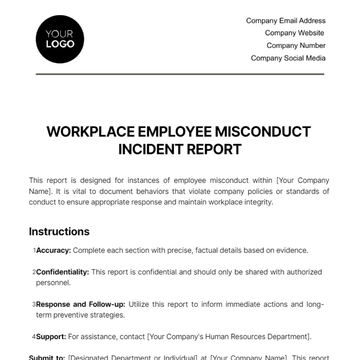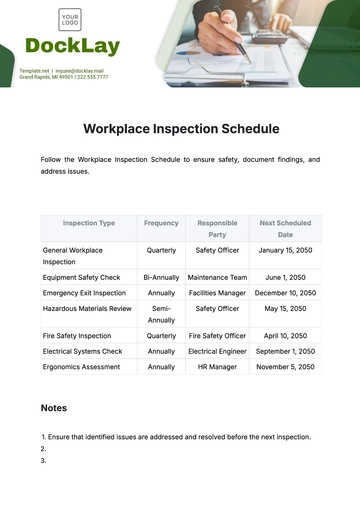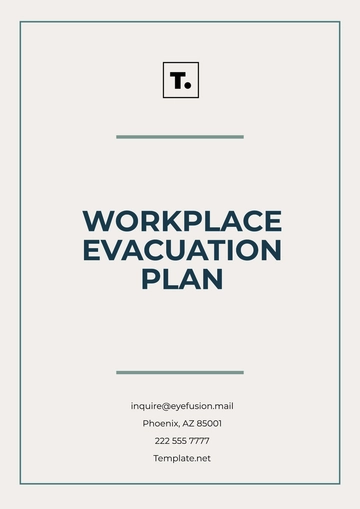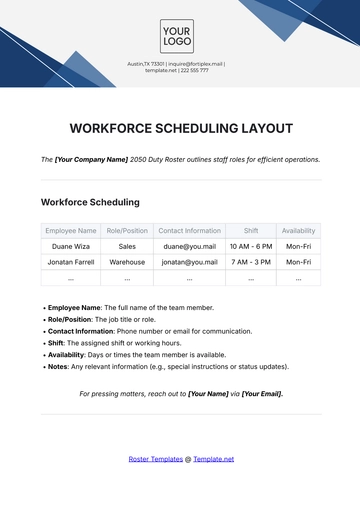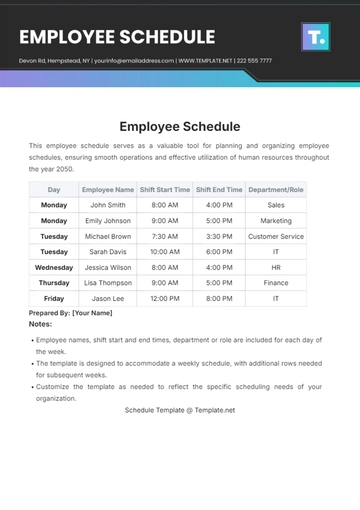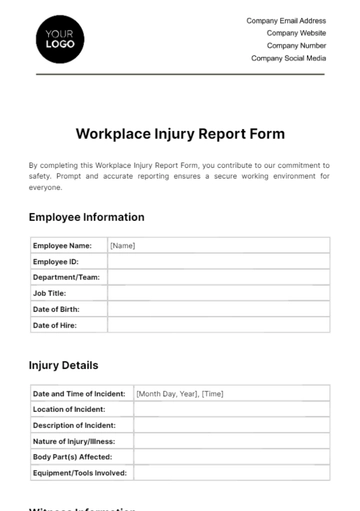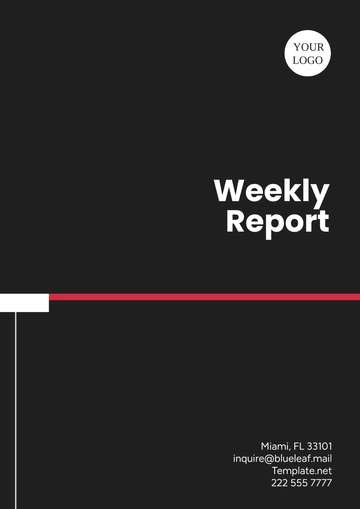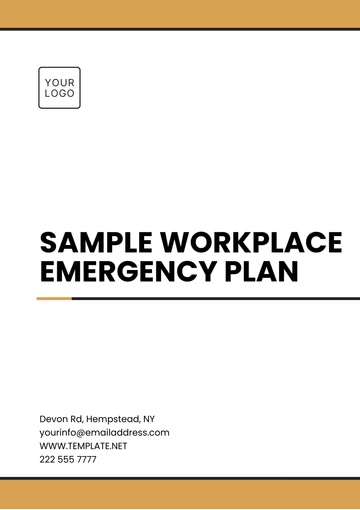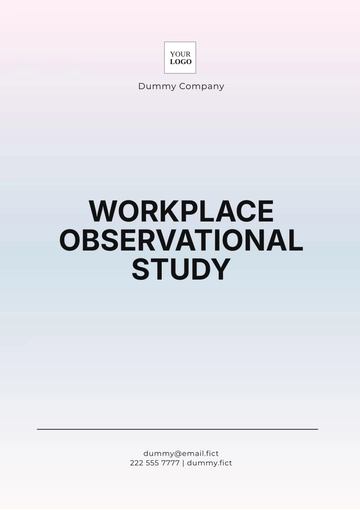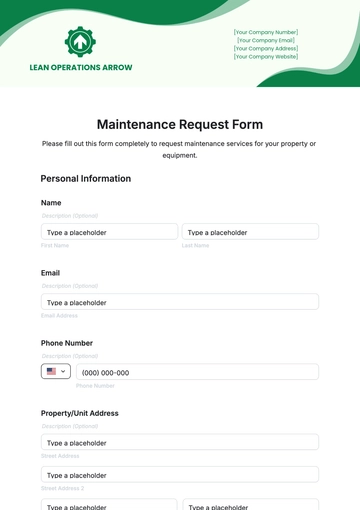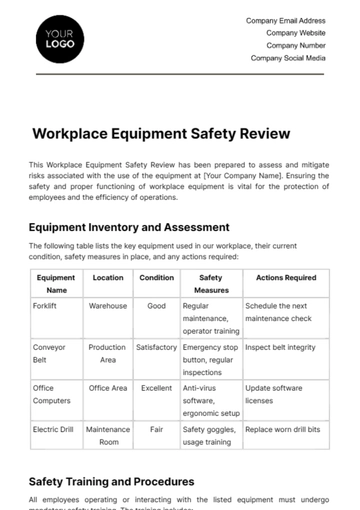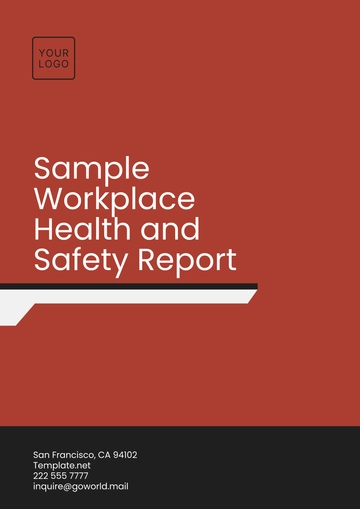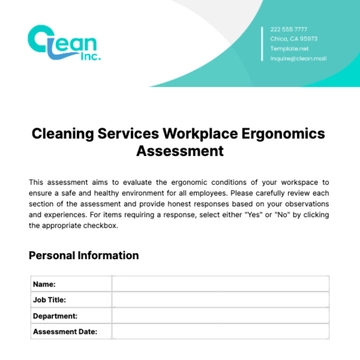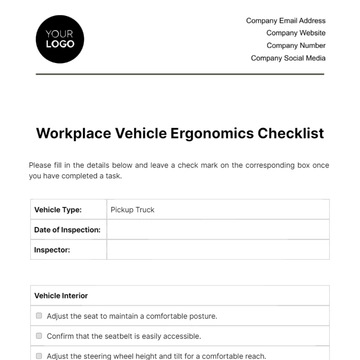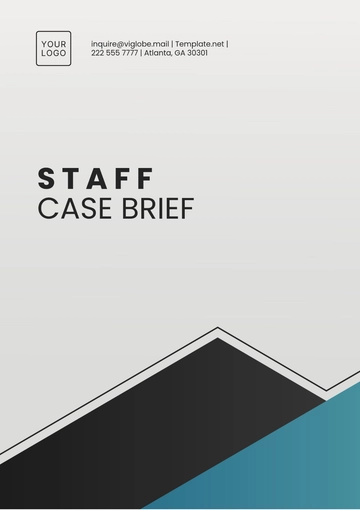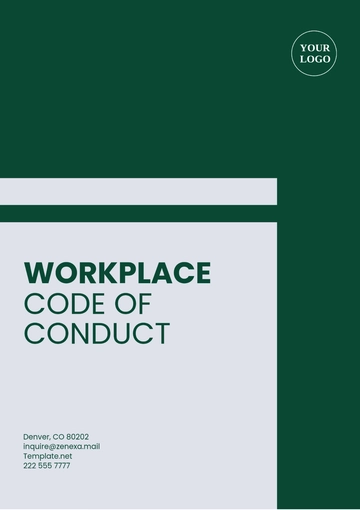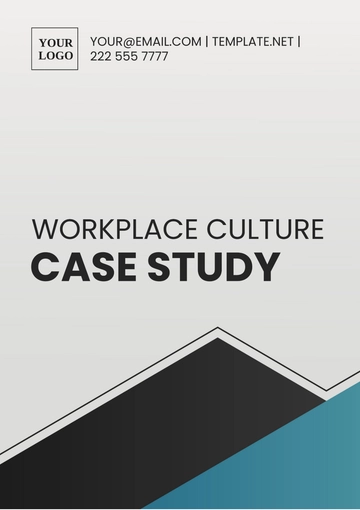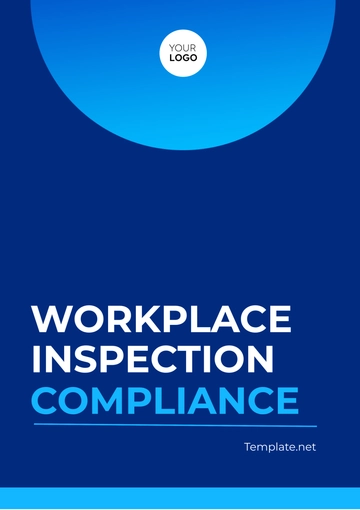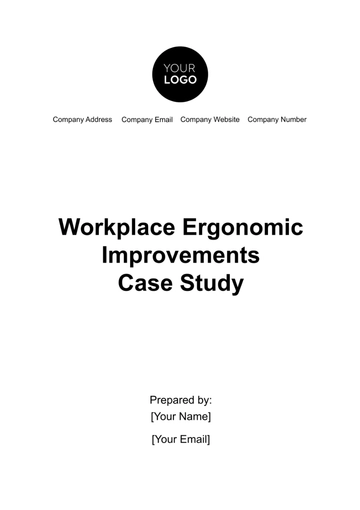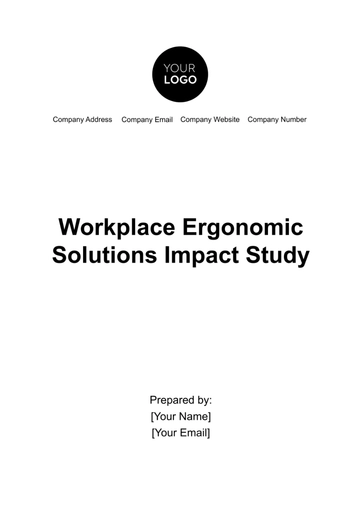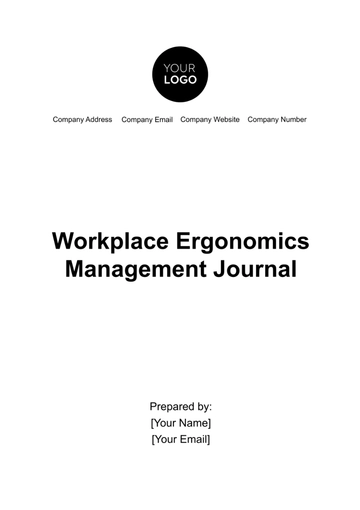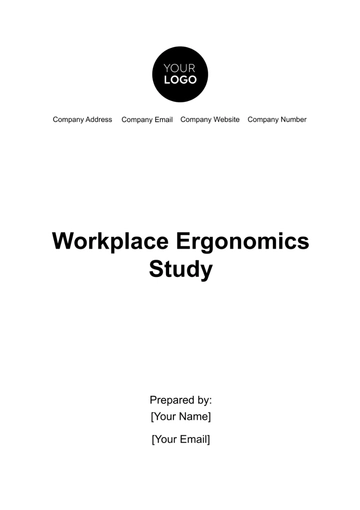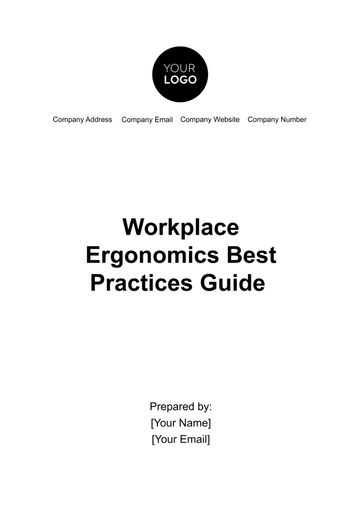Free Workplace Safety Management Journal
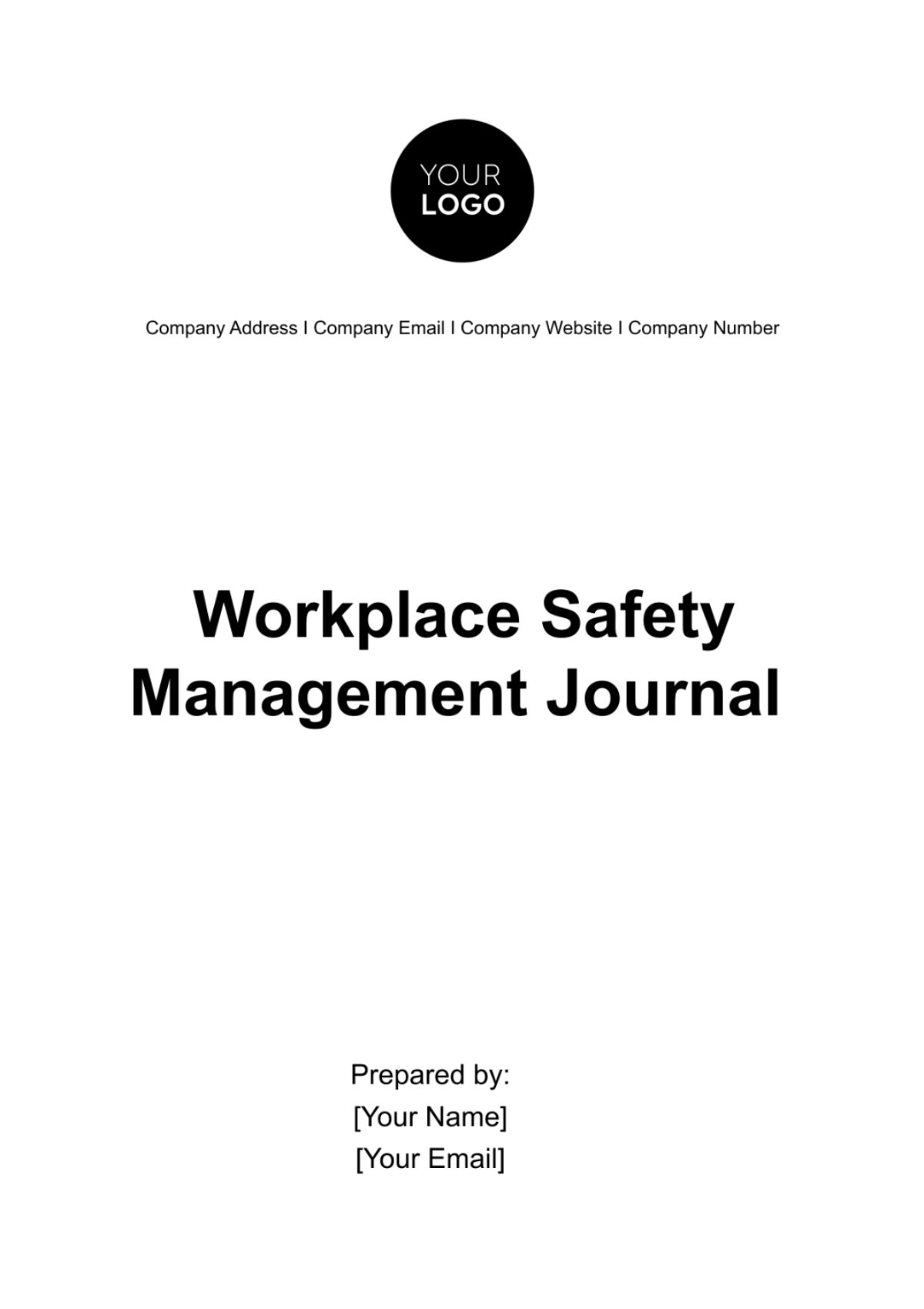
1. Introduction
[Your Company Name] is steadfast in its commitment to upholding workplace safety as a top priority. To that end, we have meticulously formulated and presented our Health and Safety Policy, a comprehensive document that serves as the bedrock of our efforts to ensure the well-being of our employees and stakeholders.
This policy is grounded in practicality and clear-headedness, devoid of any ornate or flowery language. Its core purpose is to establish, communicate, and maintain the principles, responsibilities, and procedures that govern safety within our organization in a direct and easily understandable manner.
In a world where health and safety considerations have never been more crucial, we recognize our duty to protect all individuals associated with [Your Company Name]. Whether you are a dedicated employee, a valued stakeholder, or a visitor to our facilities, this policy outlines our unwavering commitment to providing a safe and secure environment.
We take a no-nonsense approach to safety, emphasizing prevention, compliance with regulations, and continuous improvement. This policy sets the foundation for our safety culture, ensuring that safety is not just a priority but a way of life at [Your Company Name].
As you delve into the contents of this document, you will find it to be a pragmatic guide, free from any unnecessary embellishments. It reflects our earnest dedication to fostering a culture of safety and well-being throughout our organization.
Health and Safety Policy Statement
At [Your Company Name], we are steadfast in our dedication to fostering a secure and healthful work environment that extends its protective embrace to all employees, visitors, and contractors. Our commitment to safety is not a mere slogan; it's the cornerstone of our operations. Our commitment encompasses:
Preventing Accidents, Injuries, and Illnesses: We relentlessly strive to eliminate the potential for accidents, injuries, and illnesses within our workplaces. We believe that every incident is preventable through proactive measures and vigilance.
Compliance with Applicable Laws and Regulations: We adhere rigorously to all relevant laws, regulations, and standards governing workplace safety. Compliance is non-negotiable, and we consider it our duty to meet or exceed these requirements.
Continuous Improvement in Safety Performance: Our dedication to safety extends beyond compliance. We foster a culture of continuous improvement, constantly seeking ways to enhance our safety performance. This involves ongoing assessments, risk mitigation, and the implementation of best practices.
Objectives of the Policy
The core objectives of this policy are explicit and unambiguous:
Identifying and Mitigating Workplace Hazards: We diligently identify and assess workplace hazards, be they physical, chemical, or ergonomic. Through a systematic approach, we work to mitigate these risks and create a safer work environment for all.
Ensuring Employee Awareness of Safety Procedures: Our workforce is integral to our safety strategy. We ensure that employees are well-informed about safety procedures, protocols, and practices. We believe that awareness is the first step towards prevention.
Promptly Addressing Safety Concerns and Incidents: In the event of safety concerns or incidents, we are committed to swift and efficient response and resolution. Reporting procedures are clear, and investigations are thorough to prevent recurrence.
Regularly Reviewing and Updating the Policy as Needed: Safety is not a static concept; it evolves with time. We understand the importance of adaptability and regularly review and update this policy to reflect the changing landscape of workplace safety.
To provide further clarity and insight into our commitment, the table below summarizes the key elements of our Health and Safety Policy Statement:
Element | Description |
Commitment | [Your Company Name]'s unwavering commitment to safety. |
Prevention | Preventing accidents, injuries, and illnesses as a top priority. |
Compliance | Strict adherence to all applicable laws and regulations. |
Continuous Improvement | A culture of continuous improvement in safety performance. |
Objectives | The fundamental objectives of this policy. |
Hazard Identification and Mitigation | Identification and mitigation of workplace hazards. |
Employee Awareness | Ensuring employees are well-informed about safety procedures. |
Incident Response and Resolution | Promptly addressing safety concerns and incidents. |
Policy Review and Updates | The regular review and updating of the policy to maintain relevance. |
Your Company Name] stands resolute in its commitment to the principles outlined in this policy, striving for a safer, healthier, and more secure workplace for all.
3. Roles and Responsibilities
The chapter outlines the roles and responsibilities of both management and employees in ensuring the effective implementation of [Your Company Name]'s Health and Safety Policy. Clear delineation of these responsibilities is essential for the successful execution of our safety objectives.
Management Responsibilities
Management at [Your Company Name] assumes a pivotal role in establishing and maintaining a safe work environment. Their responsibilities include:
Responsibility | Details and Content |
Setting Safety Objectives and Policies | Defining overarching safety goals.<br>- Developing and implementing safety policies and procedures. |
Allocation of Resources | Allocating adequate resources for safety initiatives.<br>- Ensuring sufficient training and equipment availability. |
Hazard Identification and Mitigation | Identifying workplace hazards and assessing risks.<br>- Implementing measures to mitigate identified risks. |
Compliance with Regulations | Ensuring compliance with all applicable safety laws and regulations.<br>- Staying updated on safety requirements. |
Incident Reporting and Investigation | Establishing protocols for reporting and investigating safety incidents.<br>- Enforcing corrective actions. |
Safety Communication | Ensuring clear and effective communication of safety policies and procedures to employees.<br>- Promoting safety awareness. |
Monitoring and Review | Regularly monitoring safety performance.<br>- Conducting safety audits and reviews.<br>- Making necessary adjustments. |
Employee Responsibilities
Employees at [Your Company Name] play an integral role in maintaining a safe work environment. Their responsibilities include:
Responsibility | Details and Content |
Compliance with Safety Policies | Adhering to all safety policies and procedures.<br>- Reporting violations or unsafe conditions. |
Reporting Safety Concerns | Promptly reporting safety concerns, hazards, or incidents.<br>- Cooperating with investigations. |
Safe Work Practices | Following safe work practices and using provided personal protective equipment (PPE). |
Participation in Training | Participating in required safety training and education programs.<br>- Seeking clarification when needed. |
Emergency Response | Familiarizing themselves with emergency procedures.<br>- Responding appropriately during emergencies. |
Support for Safety Initiatives | Supporting and contributing to safety improvement initiatives.<br>- Providing feedback and suggestions. |
By delineating these roles and responsibilities, [Your Company Name] ensures that everyone within the organization understands their role in creating and maintaining a safe and secure workplace. This clarity promotes accountability and collaboration in our collective commitment to safety.
Risk Assessment
This chapter delves into the critical process of risk assessment, a cornerstone of [Your Company Name]'s commitment to workplace safety. The systematic identification, evaluation, and control of workplace hazards form the bedrock of our safety strategy. Below, we outline the key components of this process:
Identifying Workplace Hazards | Risk Evaluation and Control Measures |
Regular Workplace Inspections | Risk Prioritization: We assess the severity and likelihood of each identified hazard to prioritize them based on potential impact. |
Scheduled and unscheduled inspections are conducted to identify potential hazards. These inspections encompass all areas of our operations, including facilities, equipment, and processes. | Control Measures: Specific control measures are implemented to mitigate identified risks. These measures may include engineering controls, administrative controls, or personal protective equipment (PPE). |
Employee Reporting | Documentation: All risk assessments and control measures are thoroughly documented, ensuring transparency and accountability. |
We encourage all employees to report any safety concerns or hazards they encounter during their work. An anonymous reporting system is also available for those who prefer confidentiality. | Continuous Monitoring: We continually monitor the effectiveness of control measures and adjust them as needed to maintain a safe working environment. |
Risk Assessments | Employee Training: Employees are trained in recognizing and managing risks associated with their tasks or roles. This training empowers them to actively participate in risk reduction. |
Risk assessments are conducted for specific tasks, projects, or processes that are deemed potentially hazardous. These assessments involve a systematic examination of the task, potential risks, and mitigation strategies. | |
Hazard Identification Tools | |
We utilize various hazard identification tools, such as checklists, job safety analyses (JSAs), and incident reports, to systematically identify and document hazards. | |
5. Incident Reporting and Investigation
We focus on the critical aspects of incident reporting and investigation, key components of [Your Company Name]'s commitment to maintaining a safe and secure work environment. Reporting, investigating, and implementing corrective actions are integral in our efforts to continuously enhance safety. Here's an overview:
Reporting Procedures | Investigation Process | Corrective Actions |
Employees play a vital role in identifying and reporting safety incidents and concerns at [Your Company Name]. The reporting procedures are designed to ensure a swift and accurate response to incidents and potential hazards. | Once an incident is reported, our investigation process begins promptly. We investigate incidents thoroughly to determine root causes, contributing factors, and preventive measures. | After the investigation is complete, we focus on implementing corrective actions to address identified issues and prevent recurrence. Corrective actions are crucial in improving our safety performance. |
Employees are encouraged to report incidents immediately, regardless of their severity. | Our investigation team is composed of qualified personnel responsible for gathering evidence, conducting interviews, and documenting findings. | Corrective actions may include process improvements, additional training, policy revisions, or equipment modifications. |
Reporting can be done through various channels, including supervisors, designated safety officers, or an anonymous reporting system for confidential reporting. | Documentation of the investigation process is thorough and includes interviews, evidence, findings, and recommendations. | Implementation of corrective actions is monitored, and their effectiveness is reviewed to ensure they address the root causes. |
Timely reporting is essential to facilitate an efficient response and investigation. | The responsible personnel for the investigation may vary depending on the severity and nature of the incident. | Continuous improvement is a key aspect of our corrective action process, ensuring that we learn from incidents and work toward a safer environment. |
Incidents are documented using standardized incident report forms, ensuring consistency and completeness. | A final investigation report is compiled and shared with relevant parties, including recommendations for corrective actions. | Employees are encouraged to provide feedback on the effectiveness of corrective actions and to report any recurring safety concerns. |
Confidentiality is respected in all reporting processes, and employees are protected from retaliation for reporting safety concerns. | Lessons learned from incident investigations are shared within the organization to prevent similar incidents. | |
All reports are treated seriously and investigated thoroughly, regardless of the reporting source. | Corrective actions are prioritized based on the potential for harm and the likelihood of recurrence. | |
Employees are encouraged to participate in incident investigations and provide information to assist in determining causes and solutions. | Responsibility for monitoring and ensuring the implementation of corrective actions is assigned to accountable individuals. | |
Corrective actions are tracked and reviewed to ensure their completion and effectiveness. | ||
Ongoing communication with affected parties regarding incident resolution and corrective actions is maintained. | ||
6. Training and Awareness
We delve into the crucial aspects of training and awareness, essential components of [Your Company Name]'s commitment to cultivating a safety-conscious workforce. Training, tailored to meet specific needs, and effective communication of safety information are paramount to our safety strategy. Here's an overview:
Training Needs Assessment | Training Programs | Safety Communication |
Ensuring that our workforce possesses the necessary skills and knowledge to perform their tasks safely is a top priority at [Your Company Name]. We conduct systematic assessments to identify training needs. | [Your Company Name] offers a range of safety training programs designed to equip employees with the knowledge and skills needed to work safely. These programs are delivered through various methods to suit different learning styles. | Effective communication of safety information is crucial to maintaining awareness and fostering a culture of safety. We employ various methods to disseminate safety-related information. |
Training needs are identified through job analyses, incident analysis, regulatory requirements, and employee feedback. | New Employee Orientation: All new employees receive safety orientation training to familiarize them with our safety policies, procedures, and expectations. | Safety Meetings: Regular safety meetings are conducted to discuss safety topics, share incident reports, and address safety concerns. |
Individual employee performance and development plans may also guide training needs assessments. | Job-Specific Training: Job-specific safety training programs are tailored to address the unique risks associated with each role within the organization. | Safety Bulletins: Safety bulletins or newsletters are distributed to keep employees informed about safety updates, tips, and best practices. |
Training needs are reviewed periodically to ensure alignment with changing job requirements and organizational objectives. | Emergency Response Training: Training in emergency response procedures is provided to prepare employees for various potential scenarios. | Digital Platforms: Safety information is accessible through our company's digital platforms, ensuring that employees have easy access to resources and updates. |
Feedback from employees is actively sought and considered when developing training programs. | Refresher Training: Periodic refresher training is provided to reinforce safety knowledge and skills and to ensure ongoing compliance. | Safety Posters: Safety posters are displayed in prominent locations to serve as visual reminders of key safety practices. |
Training programs are continuously reviewed and updated to incorporate the latest safety practices and regulatory changes. | Safety Drills and Simulations: Practical drills and simulations are conducted to enhance preparedness for real-life emergency situations. | Safety Email Communications: Important safety information and updates are communicated via email to reach all employees. |
Specialized Training: Specialized safety training programs are offered for roles that involve unique or high-risk activities. | Online Learning: Online courses and modules are available to provide flexibility in training delivery. | Safety Hotline: A dedicated safety hotline is accessible for reporting safety concerns or seeking assistance. |
Training records are maintained to track completion and compliance with training requirements. | Training Records: Records of completed training are maintained to track employee compliance and to ensure that refresher training is scheduled as needed. | Leadership Engagement: Leaders actively engage with employees to reinforce the importance of safety and encourage reporting of safety concerns. |
Competency Assessments: Competency assessments may be conducted to evaluate the effectiveness of training and individual skills. | ||
External Training Resources: We collaborate with external organizations and experts to provide specialized safety training when necessary. | ||
Safety Certifications: Employees may have the opportunity to earn safety certifications in their respective fields. | ||
Training Feedback: Employee feedback on training programs is actively sought to make continuous improvements. | ||
7. Emergency Response Plan
This chapter lays out the critical components of our Emergency Response Plan, a cornerstone of [Your Company Name]'s commitment to preparedness and safety during unexpected events. Our focus includes detailed evacuation procedures, access to first aid and medical assistance, and effective communication strategies during emergencies.
Evacuation Procedures | First Aid and Medical Assistance | Communication during Emergencies |
[Your Company Name] places paramount importance on the safety of its employees, visitors, and stakeholders during emergencies. Our evacuation procedures are meticulously designed to ensure swift and safe evacuation from our facilities. | In the event of injuries or medical emergencies, prompt access to first aid and medical assistance is crucial. [Your Company Name] has established comprehensive protocols to address such situations. | Clear and effective communication is essential during emergencies to ensure the safety and well-being of all individuals. We have established robust communication procedures to facilitate this. |
Evacuation routes and assembly points are clearly marked and regularly reviewed. | First Aid Stations: First aid stations are strategically located throughout our facilities, stocked with essential supplies and staffed by trained personnel. | Emergency Contact List: An up-to-date emergency contact list is maintained, providing contact information for key personnel, local authorities, and emergency services. |
Emergency alarms and notifications are in place to alert everyone in the event of an emergency. | Medical Assistance: We have arrangements with nearby medical facilities to ensure rapid access to advanced medical care when needed. | Emergency Communication Devices: Dedicated communication devices are available to key personnel to maintain communication in case of power outages or network disruptions. |
Employees are trained on evacuation procedures and participate in regular drills to ensure readiness. | Trained First Aiders: A team of trained first aiders is available to provide immediate assistance until professional medical help arrives. | Emergency Broadcast Systems: We utilize emergency broadcast systems to relay important information and instructions during crises. |
Specialized evacuation procedures are in place for individuals with disabilities or mobility challenges. | Medical Equipment: Automated External Defibrillators (AEDs) and other necessary medical equipment are strategically placed for immediate use. | Emergency Response Teams: Emergency response teams are trained and ready to coordinate responses and provide support during emergencies. |
Designated personnel are responsible for assisting with evacuation efforts and ensuring all individuals are accounted for. | Reporting Procedures: Employees are educated on how to report injuries or medical emergencies promptly. | Communication Protocols: Specific communication protocols are in place for various types of emergencies, including fires, natural disasters, and security incidents. |
Evacuation plans are regularly reviewed and updated based on feedback and lessons learned from drills and incidents. | Medical Records: Confidential medical records are maintained for employees who require specific medical attention or accommodations during emergencies. | Emergency Hotlines: Dedicated hotlines are established for reporting emergencies and receiving immediate assistance. |
Emergency communication systems are tested regularly to ensure their functionality. | Continuous Training: First aid and emergency response training are ongoing to enhance employee readiness and skills. | Message Dissemination: Procedures are in place to disseminate critical messages to all employees and stakeholders promptly. |
- Employee accountability procedures are established to ensure everyone is safely evacuated and accounted for during emergencies. | - Medical Emergency Coordination: Coordination with local medical facilities is established to ensure efficient medical response. | Crisis Communication Team: A dedicated crisis communication team is responsible for managing information flow and updates during emergencies. |
Emergency Transportation: Arrangements for emergency medical transportation are in place when necessary. | Social Media Updates: We use our social media channels to provide real-time updates and instructions to the public during emergencies. | |
Medical Emergency Contacts: Key medical contacts are readily available to facilitate communication and coordination during medical emergencies. | ||
At [Your Company Name], our Emergency Response Plan is a testament to our unwavering commitment to the safety and well-being of all individuals within our facilities. These comprehensive procedures and communication protocols ensure that we are prepared and equipped to respond effectively to any emergency situation.
8. Safety Performance Metrics
This chapter presents the critical aspects of tracking, benchmarking, and continuous improvement in safety performance—a fundamental part of [Your Company Name]'s commitment to a culture of safety excellence. Here, we outline how safety performance is assessed, measured, and improved to ensure the well-being of our employees and stakeholders.
Tracking and Measurement | Benchmarking | Continuous Improvement |
[Your Company Name] places great emphasis on tracking and measuring safety performance as a means of ensuring continuous improvement. This involves the systematic collection and analysis of data related to safety incidents, near-misses, and safety compliance. | Benchmarking plays a pivotal role in our safety strategy. By comparing our safety performance with industry standards and best practices, we gain valuable insights into areas where we excel and areas that require improvement. | Continuous improvement is ingrained in our safety culture. We proactively identify areas for enhancement and implement strategies to make our workplaces even safer. This includes learning from incidents and near-misses, as well as feedback from employees. |
Key Safety Metrics: We identify and track key safety metrics, such as Total Recordable Incident Rate (TRIR), Lost Time Injury Frequency Rate (LTIFR), and near-miss reporting rates. | Industry Comparisons: We benchmark our safety performance against industry-specific benchmarks to identify opportunities for improvement. | Incident Analysis: In-depth analysis of incidents and near-misses helps identify root causes and trends, allowing us to take preventive actions. |
Data Collection: Accurate data collection is essential. We utilize incident reporting systems, safety audits, and inspections to collect data on safety performance. | Best Practices Adoption: Benchmarking allows us to identify best practices from top-performing organizations and implement them within our own safety programs. | Employee Feedback: We actively seek feedback from employees on safety-related matters, and their input is integral to our improvement efforts. |
Regular Reporting: Safety performance data is reported regularly to management and relevant stakeholders. Transparency is a key principle of our reporting process. | External Comparisons: We compare our safety performance with external organizations, industry associations, or safety award winners to gain fresh perspectives. | Corrective Actions: Insights from benchmarking and incident analysis lead to the development and implementation of corrective actions, driving continuous improvement. |
Leading Indicators: In addition to lagging indicators, we track leading indicators such as safety training completion rates, safety observations, and safety culture surveys to predict and prevent incidents. | Goal Setting: Benchmarking informs our safety improvement goals, helping us set ambitious yet achievable targets for safety performance. | Training and Awareness: Continuous improvement efforts include ongoing training and awareness campaigns to keep employees informed and engaged in safety. |
Root Cause Analysis: Root cause analysis is conducted for incidents and near-misses to understand the underlying causes and to prevent similar incidents from occurring. | Performance Reviews: Regular performance reviews, both internal and external, provide insights into the effectiveness of our safety programs and initiatives. | Data-Driven Decisions: Safety performance data guides decision-making at all levels of the organization, ensuring a data-driven approach to safety. |
- Incident Trend Analysis: We analyze incident trends to identify patterns and recurring issues that require targeted interventions. | - Sharing Best Practices: We actively share our own safety best practices with other organizations, contributing to collective safety improvement efforts. | - Employee Involvement: Employees are encouraged to actively participate in safety improvement initiatives and suggest ways to enhance safety. |
- Safety Leading Culture: Our ultimate goal is to foster a safety-leading culture where safety is not just a program but a way of life. This requires continuous vigilance, learning, and adaptation. | - Continuous Feedback: The benchmarking and improvement process is ongoing, ensuring that we remain agile and responsive to changing safety needs and challenges. | - Safety Recognition: Employees who contribute to safety improvements are recognized and celebrated for their dedication to safety. |
- Lessons Learned: Lessons learned from benchmarking and safety improvement efforts are documented and shared across the organization to promote a culture of continuous learning. | ||
We are steadfast in our commitment to using data, benchmarking, and continuous improvement as cornerstones of our safety performance strategy. These efforts ensure that we consistently raise the bar for safety, protecting the well-being of our valued employees and stakeholders.
9. Appendices
[Include contact information, your name, financial information, and the date of the last update as specified.]
This Workplace Safety Management Journal is a living document that reflects our commitment to safety at [Your Company Name]. It serves as a comprehensive reference for all employees and stakeholders, guiding us in maintaining a secure work environment. Periodic reviews and updates ensure its relevance and effectiveness.
- 100% Customizable, free editor
- Access 1 Million+ Templates, photo’s & graphics
- Download or share as a template
- Click and replace photos, graphics, text, backgrounds
- Resize, crop, AI write & more
- Access advanced editor
Elevate your workplace safety practices with Template.net's Workplace Safety Management Journal Template. Fully editable and customizable, this journal is designed to streamline your safety management process. Integrated with our Ai Editor Tool, it allows for easy customization, ensuring your safety protocols are accurately recorded and efficiently managed. Stay ahead with Template.net's innovative solutions.
